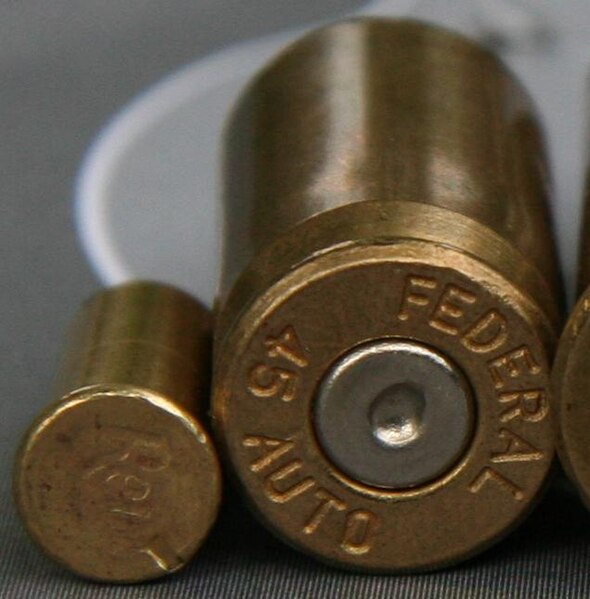The .44 Henry, also known as the .44 Henry Flat, the .44 Rimfire, the .44 Long Rimfire, and the 11x23mmR in Europe, is a rimfire rifle and handgun cartridge featuring a .875 in (22.2 mm)-long brass or copper case. The round has a total overall length of 1.345 in (34.2 mm), with a 200 or 216 gr .446 in (11.3 mm)-diameter cast solid-lead heeled bullet. The original propellant load is 26 to 28 gr of black powder. The round has a muzzle velocity of approximately 1,125 ft/s (343 m/s), giving a muzzle energy of 568 foot-pounds.
.44 Henry cartridges
.44 Henry Flat cartridge
A rim-fire is a type of metallic cartridge used in firearms where the primer is located within a hollow circumferential rim protruding from the base of its casing. When fired, the gun's firing pin will strike and crush the rim against the edge of the barrel breech, sparking the primer compound within the rim, and in turn ignite the propellant within the case. Invented in 1845 by Louis-Nicolas Flobert, the first rimfire metallic cartridge was the .22 BB Cap cartridge, which consisted of a percussion cap with a bullet attached to the top. While many other different cartridge priming methods have been tried since the early 19th century, such as teat-fire and pinfire, only small caliber rimfire cartridges have survived to the present day with regular use. The .22 Long Rifle rimfire cartridge, introduced in 1887, is by far the most common ammunition found in the world today in terms of units manufactured and sold.

Fired rimfire (left) and centerfire cartridges. A rimfire firing pin produces a notch at the edge of the case; a centerfire pin produces a depression in the center of the primer.
6 mm Flobert or .22 BB Cap ammo with Container
.41 Swiss rimfire cartridge
.22 Long Rifle – subsonic hollow point (left), standard velocity (center), hyper-velocity "Stinger" hollow point (right)






